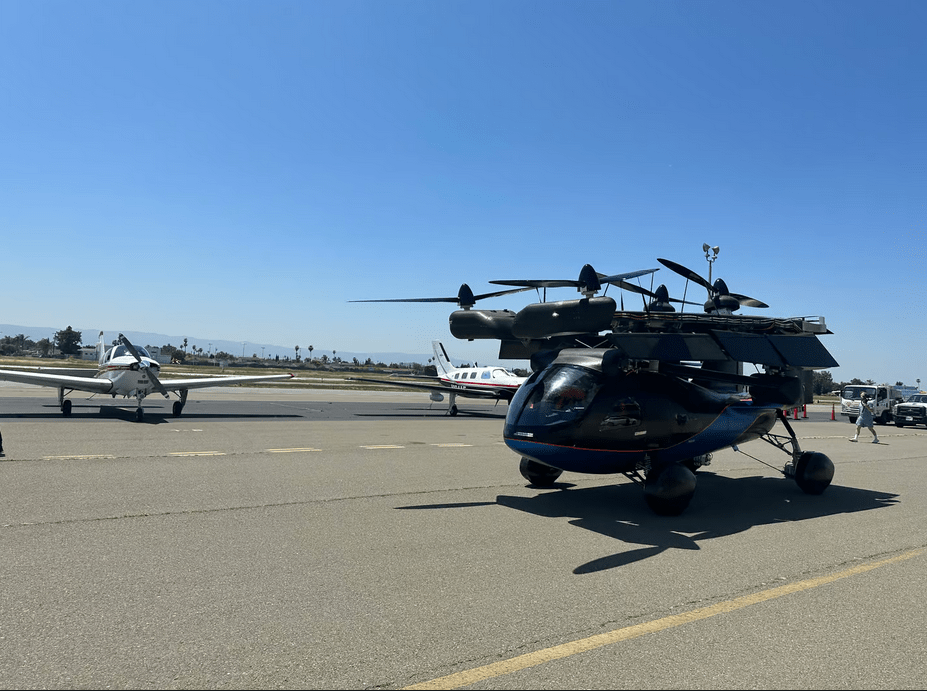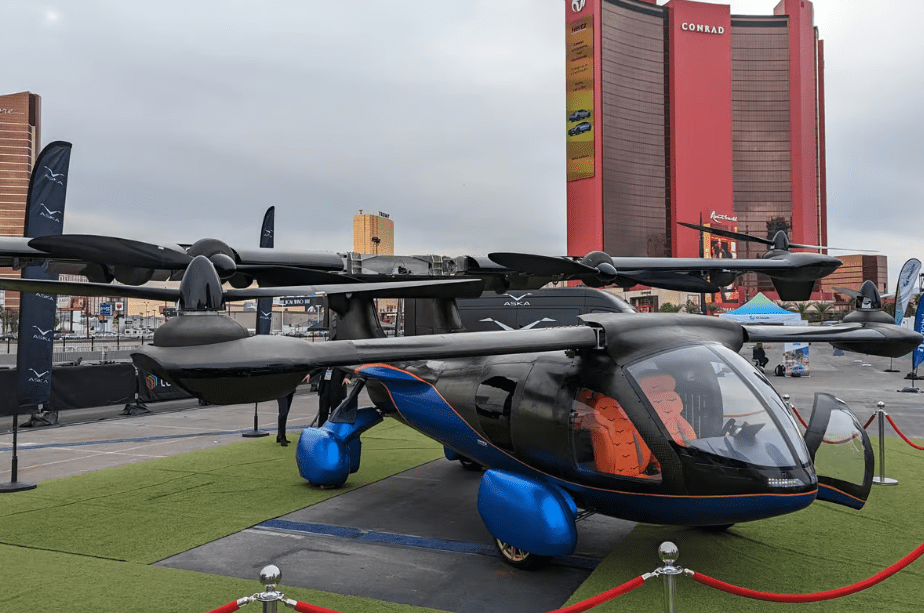Flying cars have always been a fascinating concept, envisioning vehicles that seamlessly switch between driving on the road and flying in the air. The Aska A5, priced at $789,000, is one such ambitious project that promises to do it all.
The Aska A5 is not just an ordinary three-wheeler; it’s a four-seat car resembling an SUV, capable of traveling at highway speeds. Despite its rather peculiar appearance, it has the capability to perform both as a car and an electric Vertical Take-Off and Landing (eVTOL) aircraft with tilt-capable propellers and wide wings for cruising.

Its flight range spans an impressive 250 miles (400 km) at speeds of up to 150 mph (240 km/h), thanks to its range-extended hybrid powertrain. Additionally, the A5 can glide gracefully as a winged aircraft, allowing take-off and landing on runways, even short ones.
And now the company’s announced it’s “the world’s first flying car to receive authorization to drive on public roads from the United States (US) Department of Motor Vehicles (DMV).”
Aska says its prototype A5 has “successfully conducted more than 300 miles [480 km] of road testing around Silicon Valley with a DMV number plate.”
“Being the first electric flying car developer to be successfully conducting driving tests on local roads in California validates our efforts to develop an eVTOL that is roadable and with an emphasis on safety,” says Maki Kaplinsky, Chair & COO/Cofounder, in a press release.


Though the idea of such a vehicle may seem outrageous and impossible, the Aska A5 has already been prototyped. The company claims to be conducting flight testing after receiving necessary certifications from the Federal Aviation Administration (FAA). However, it’s important to note that the current certification is limited to the prototype and does not grant permission for commercial sales.
While Aska has garnered significant interest with over 60 pre-orders amounting to $50 million, achieving full FAA-type certification remains a challenging task. The A5, to be street-legal, must meet rigorous automotive safety standards, including crash testing and various safety features like airbags and child seat tethers. These requirements are not only laborious and expensive but also contribute to the vehicle’s potentially excessive weight.


The complexity of designing a winged, transitioning eVTOL aircraft like the A5, coupled with the challenge of ensuring its safe operation, is why there are very few companies working on similar projects. Additionally, the folding wings needed for road driving add further complexity.
One possibility for Aska is to sell the A5 as a kit build, allowing owners to register it as both a home-built car with the Department of Motor Vehicles (DMV) and a kit-built aircraft with the FAA. However, their ultimate goal is to achieve G1 status with the FAA, a stepping stone toward full certification.
The concept of a flying car like the Aska A5 is indeed bewildering, but the company has made considerable progress toward its realization. While challenges remain, the A5’s unique capabilities and features make it an audacious and ambitious project in the realm of futuristic transportation.


